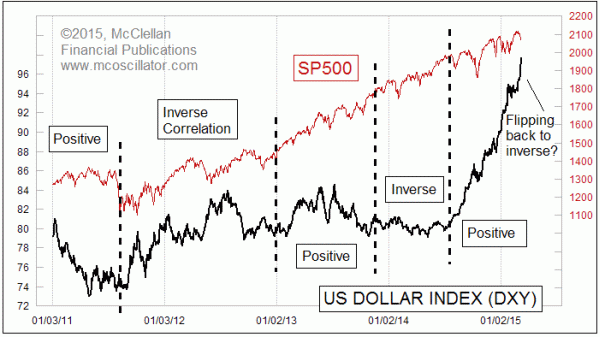The correlation between any two variables (or sets of variables) summarizes a relationship, whether or not there is any real-world connection between the two variables. The correlation coefficient will always be between -1 and +1. These two extremes are considered perfect correlations. A negative coefficient means that the two variables, or sets of variables, will move in opposite directions (if one variable increases, the other will decrease); a positive coefficient will mean that the two will move in the same direction (as one increases, the other will increase).
If we compare the US Dollar Index (USDX), an index that tracks the value of the U.S. dollar against six other major currencies, and the value of the Dow Jones Industrial Average (DJIA), Nasdaq and S&P 500 over a 20-year period, the correlation coefficient calculated for the USDX versus the DJIA, Nasdaq and S&P 500, is 0.35, 0.39 and 0.38, respectively. Note that all of the coefficients are positive, which means that as the value of the U.S. dollar increases, so do the stock indexes, but only by a certain amount. Notice also that each coefficient is below 0.4, which means that only about 35% to 40% of the stock indexes' movements are associated with the movement of the U.S. dollar.
A country's currency can become more valuable in relation to the rest of the world in two main ways: when the amount of currency units available in the world market place is reduced (for example, when the Fed increases interest rates and causes a reduction in spending), or by an increase in the demand for that particular currency. The fact that an increase in the U.S. dollar affects the value of American stocks seems natural, as U.S. dollars are needed to purchase stocks.
The value of American stocks, especially those that are included in market indexes, tend to increase along with the demand for U.S. dollars - in other words, they are positively correlated. One possible explanation for this relationship is foreign investment. As more and more investors put their money in U.S. equities, they are required to first buy U.S. dollars, which can be used to purchase American stocks, causing the indexes to increase in value.
The Real Relationship Between Dollar and Stock Market








